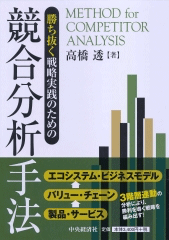
The Fog of War in Business Part 3
ニューチャーネットワークス チーフコンサルタント
ジェームス キャンベル
組織パフォーマンス向上「グローバル・ビジネスリーダー」”
選りすぐりの組織ほどメンバーの個性は強い。
個性が強ければ船頭が多くなりすぎることもある。
個性が強ければ船頭が多くなりすぎることもある。
チームとは、一人ひとりが強いだけでは機能しない。
独特の強みを持つメンバーを励ましたり宥めたりして、
なんとかゴールに引っ張っていくのが優れたリーダーである。
その過程で、かっこいいことは実は少ない。
カギとなるのはMeeting Prioritization Scaleと、
Pre-Wash Meetingというマネジメントである。
今回は、不確実性の高い組織状況において
どのようにリーダーシップを発揮するかを考える。
※本コラムは英語で執筆いたしました。ご了承ください。
メルマガ会員登録
記事全文をご覧いただくには、メルマガ会員登録(無料)が必要です。
是非、この機会に、メルマガ会員登録をお願い致します。
メルマガ会員登録はこちらです。
会員の方は以下よりログインください。











